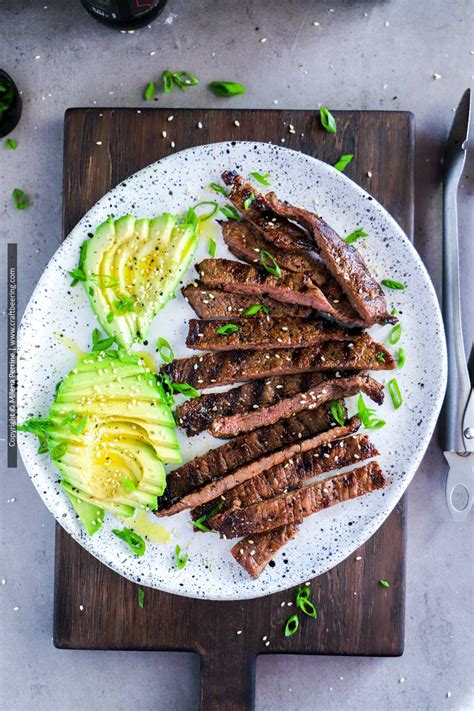Thin Sirloin: Tender Every Time, Guaranteed
Thin sirloin, sometimes called sirloin flap steak, is a flavorful yet often overlooked cut. Its lean nature and affordability make it a budget-friendly option, but its reputation for toughness can be a deterrent. This comprehensive guide will equip you with the knowledge and techniques to ensure your thin sirloin is tender and delicious every single time, transforming this budget-friendly cut into a culinary star.
What is Thin Sirloin Steak?
Thin sirloin, also known as sirloin flap steak or butler's steak, is a flavorful cut from the sirloin primal. It's leaner than many other steak cuts, which contributes to its lower price point. However, its leanness also makes it prone to toughness if not cooked properly. Understanding its unique characteristics is the first step to mastering this cut. It's typically thinner than other steaks, hence the name, often ranging from ¼ to ½ inch thick.
Why is Thin Sirloin Sometimes Tough?
The toughness of thin sirloin stems primarily from its relatively low fat content and muscle structure. Leaner cuts have less marbling (intra-muscular fat), which naturally tenderizes the meat. The muscle fibers in thin sirloin are also relatively tightly packed, contributing to its firmness.
How to Choose the Best Thin Sirloin Steak
Selecting the right steak is crucial for a tender outcome. Look for steaks with vibrant red color, a good amount of marbling (even though it's less than other cuts), and firm texture. Avoid any steaks that appear dry, pale, or have a slimy texture. Freshness is paramount; choose steaks that are properly refrigerated and have a "sell by" date that allows sufficient time for preparation.
How to Make Thin Sirloin Tender: Preparation is Key
The secret to tender thin sirloin lies in proper preparation. Don't underestimate the importance of these steps:
Marinades: Infusing Flavor and Tenderness
Marinades work wonders for thin sirloin. Acidic ingredients like lemon juice, vinegar, or wine help to break down the muscle fibers, resulting in a more tender steak. Furthermore, marinades add incredible depth of flavor. Experiment with different combinations, but a simple marinade of olive oil, soy sauce, garlic, and herbs is always a winner. Marinate for at least 30 minutes, or even better, overnight in the refrigerator.
Tenderizing with a Meat Mallet
Using a meat mallet to gently pound the steak to an even thickness helps to further tenderize the muscle fibers. This creates a more uniform cooking process and helps prevent overcooking on the edges while the center remains tough. Be careful not to over-pound, though; you want to tenderize, not pulverize!
Score the Surface
Scoring the surface of the steak – making shallow cuts across the grain – allows for deeper penetration of marinade and creates more surface area for browning.
Cooking Thin Sirloin for Maximum Tenderness
Pan-Seared Thin Sirloin
Pan-searing is a fantastic method for thin sirloin, providing a beautiful crust while ensuring even cooking. Heat a heavy-bottomed skillet over medium-high heat. Add a little oil, then sear the steak for 2-3 minutes per side, or until nicely browned. Reduce the heat to medium and continue cooking to your desired level of doneness, using a meat thermometer for accuracy.
Grilled Thin Sirloin
Grilling adds a smoky char that complements the flavor of thin sirloin. Preheat your grill to medium-high heat. Grill the steak for 2-3 minutes per side, then reduce the heat to medium and continue cooking to your desired doneness, paying close attention to prevent burning.
What Temperature Should I Cook Thin Sirloin?
This depends on your preference, but here's a helpful guide using a meat thermometer:
- Rare: 125-130°F
- Medium-Rare: 130-140°F
- Medium: 140-150°F
- Medium-Well: 150-160°F
- Well-Done: 160°F+
It’s generally recommended to avoid cooking thin sirloin well-done, as it can become dry and tough.
How Long Should I Cook Thin Sirloin?
Cooking time depends on the thickness of the steak and your preferred level of doneness. Always use a meat thermometer for the most accurate results. A thinner steak will cook much faster than a thicker one.
Can I Slow Cook Thin Sirloin?
Yes! Slow cooking is an excellent way to tenderize thin sirloin and infuse it with deep flavors. It’s ideal for tougher cuts, making the slow cooking method perfect for this lean steak.
Thin Sirloin Recipes and Serving Suggestions
The versatility of thin sirloin is remarkable. It's delicious served simply with a sprinkle of salt and pepper, but also pairs well with various sauces, from chimichurri to a rich red wine reduction. It's a perfect addition to stir-fries, fajitas, or even tacos.
Conclusion: Thin Sirloin: A Delicious and Affordable Option
With the right techniques, thin sirloin can be a truly exceptional dining experience. By focusing on proper preparation, choosing the right cooking method, and paying attention to doneness, you can unlock the delicious potential of this often-underestimated cut of beef, consistently achieving tender and flavorful results. So ditch the preconceived notions, experiment, and enjoy the delicious affordability of perfectly cooked thin sirloin!

